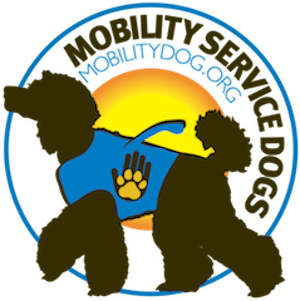How to Train a Confident Service Dog (or your Family Dog)
Two Beautiful Light-Colored Poodles Laying Down
Service dogs are the embodiment of unshakeable confidence! It’s that confidence that makes them invaluable to the men and women they serve!
Canine Confidence
What is dog confidence? It is a learned life skill, much like it is in humans. According to Victoria Schade, CPDT-KA, a “confident dog is able to face unfamiliar situations and respond appropriately and also bounce back from uncomfortable or scary situations with ease.” While some dogs may be predisposed to being confident or not, it’s important to build their overall confidence in all kinds of situations, all kinds of people, pets, children and more! This is especially true for service dogs where they are responsible for their handler’s safety, but it’s just as important for the canine on your couch!
Young Puppy Playing with a Small Child
Confidence Starts Early!
Canine confidence (or the lack of) begins early in the puppy’s life. This is why early socialization is so critical.
When puppies have been inadequately prepared, fears, phobias and unwanted reactivity can begin to develop and worsen over time. But the lack of confidence can also negatively affect the dog’s life and health!
The Link Between Confidence and K9 Health
You probably already know how detrimental stress can be to your health and emotional wellness. But have you ever thought about how stress affects your dog? Just like with humans, fear and anxiety can cause spikes in your dog’s stress hormones leading to issues including:
Loss of appetite.
Vomiting and/or diarrhea.
A compromised immune system potentially allowing the onset of disease.
The importance of canine confidence cannot be stressed enough! Next, let’s look at how you can support your dog in building his confidence.
Black Puppy Sitting and Looking Up
Training a Confident Dog
Whether you are training a Service Dog or giving your family dog a confidence boost, the tips below can help!
Build a strong foundation with lots of socialization during puppyhood and beyond.
Learn to see the world through your dog’s eyes. Remember, he’s trying to learn how to navigate in our world so empathy and patience go a long way! Never force them to accept a situation.
Use fun, positive training (and praise) to increase your dog’s comfort and confidence.
Allow your dog opportunities to explore and interact on his own terms and time.
But what if your dog is already fearful and anxious? The suggestions below, along with the ones above, can help them regain their confidence.
Training a Fearful Dog
There are things you can do to help your dog recover his confidence.
The first step is to learn what triggers the fearful or reactive response. Slowly, with counterconditioning and desensitization plus lots of positive reinforcement, you can help your dog overcome his negative reaction to the trigger and move forward with confidence.
Become fluent in K9 body language. When you understand what triggers your dog and how they are feeling, you can help them better. Dogs always provide cues about how they are feeling and this gives you the opportunity to address the situation before it gets out of hand.
Note: If you find yourself in over your head when it comes to rehabilitating a fearful dog, reach out for professional help for your dog’s needs and lifestyle!
All images courtesy of MobilityDog.
Meet the Mobility Dog Community with Janie Lynn Heinrich
Remember, your donations support our Service Dog Teams! 100% of your donation supports people with disabilities. Donate here today.




